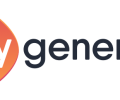I want to write a series of post on my professional foundations both for (e)learning and managing. This blog is about the foundation we have at Stoas for our learning solutions. Another blog will be about ‘output management’, my management foundation. There will be probably be some more.
One of my tasks at Stoas is to create and maintain a learning framework. Stoas is a leading supplier of learning tools in the Netherlands, with tools like Questionmark Perception and Blackboard. We want to move from a supplier role to a role where we are a learning solution partner. In order to do that we need to create learning solutions that are based on a coherent framework; solutions often consist of more than one tool.
In order to get away from the ICT perspective we first came up with a Learning landscape; an image of the learning process. As a matter of fact there are two processes; Learning and the development of (e)learning materials.
After that all we need to do was to select the correct tools and connect the tools using standards.


As you can see Stoas doesn’t have specific tools for managing and planning. Tools like Sumtotal, Plateau and Saba. These tools are more about managing the process and data and not about actual learning. We decided that that is not what we are best in, therefore we don’t sell these tools.
We want to be able to realize learning solutions based on proprietary software, on open source software or of a mix of both.
We are constantly evaluating the tools in our framework, this leads to changes. Stoas was a Sakai partner, but we were not successful in selling and implementing it, so we decided to stop with Sakai. We added Mahara to our framework and became the official Mahara partner for the Netherlands. At this moment we are looking into tools like ELGG and Dimdim. We might add them to our framework.
There is a lot to be said about this framework. Does it make sense, is it complete, is it logical? Who has another (better) framework? What are the differences in a framework for educational institutions and corporations? How does this framework really connects to the workplace (through EPSS?). How does it relate to life long learning? I hope to get some responses on these issues. If people are interested we might start a discussion group on this topic.



